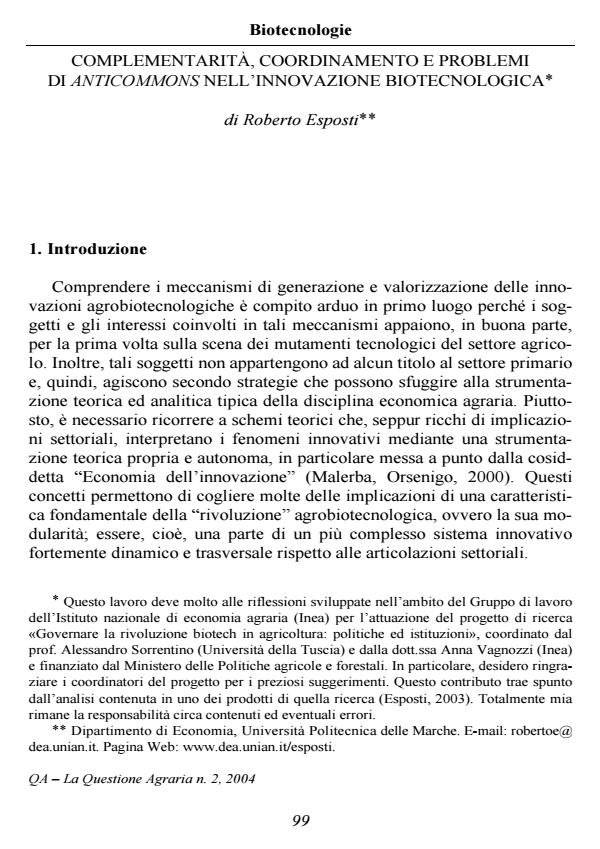Complementarità, coordinamento e problemi di anticommons nell'innovazione biotecnologica
Journal title QA Rivista dell’Associazione Rossi-Doria
Author/s Roberto Esposti
Publishing Year 2004 Issue 2004/2
Language Italian Pages 36 P. File size 179 KB
DOI
DOI is like a bar code for intellectual property: to have more infomation
click here
Below, you can see the article first page
If you want to buy this article in PDF format, you can do it, following the instructions to buy download credits

FrancoAngeli is member of Publishers International Linking Association, Inc (PILA), a not-for-profit association which run the CrossRef service enabling links to and from online scholarly content.
Biotechnological Innovations: Complementarity, Coordination and the Problemof the Anticommons - Agbiotech innovations are the final outcome of a highly complex system of knowledge, research and technological development. The aim of this paper is to analyse those knowledge modules contributing to the creation and enhancement of biotech innovations in agriculture (mainly, GM varieties). The marked complementarity between these modules may in fact generate serious problems of coordination. Indeed, the strategies of agbiotech companies may be seen as forms of technological portfolio management adopted to address these coordination problems. Nonetheless, these strategies fail to achieve optimal vertical and horizontal coordination of typically non-appropriable (and thus public) modules. From the social perspective, the major problem in drawing up appropriate public research and intellectual property rights policy lies in the need to coordinate both private and public modules, both vertically and horizontally. With particular reference to agbiotech specificities, the paper also examines which of those policies and corporation strategies have actually been implemented to solve the coor dination problems, and what additional solutions can be introduced and further enhanced in the future.
Roberto Esposti, Complementarità, coordinamento e problemi di anticommons nell'innovazione biotecnologica in "QA Rivista dell’Associazione Rossi-Doria" 2/2004, pp , DOI: